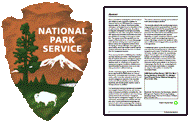United States National Park Service

United States National Park Service: Publications
Date of this Version
2005
Citation
Molecular Ecology (2005) 14 , 195–201; doi: 10.1111/j.1365-294X.2004.02385.x
Abstract
The use of noninvasive genetic sampling (NGS) for surveying wild populations is increasing rapidly. Currently, only a limited number of studies have evaluated potential biases associated with NGS. This paper evaluates the potential errors associated with analysing mixed samples drawn from multiple animals. Most NGS studies assume that mixed samples will be identified and removed during the genotyping process. We evaluated this assumption by creating 128 mixed samples of extracted DNA from brown bear (Ursus arctos) hair samples. These mixed samples were genotyped and screened for errors at six microsatellite loci according to protocols consistent with those used in other NGS studies. Five mixed samples produced acceptable genotypes after the first screening. However, all mixed samples produced multiple alleles at one or more loci, amplified as only one of the source samples, or yielded inconsistent electropherograms by the final stage of the error-checking process. These processes could potentially reduce the number of individuals observed in NGS studies, but errors should be conservative within demographic estimates. Researchers should be aware of the potential for mixed samples and carefully design gel analysis criteria and error checking protocols to detect mixed samples.

